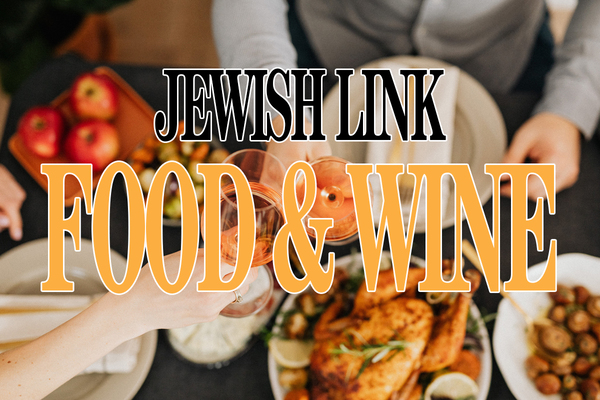During quarantine, as the number of things to think about started to run out and boredom began to set in, I turned my thoughts to an age-old question that has baffled wise men and philosophers for generations. I was in the shower, where a surprising amount of my good ideas are cooked up (Cholent Pun #1), when I had my epiphany! I realized life is a cholent. Before I could throw out the idea, I did something I usually don’t, and I actually thought about it. After a while, it started to make sense.
After having gone through the ingredients, let’s try to figure out what makes it so good. Before I get into the heavy hitters, I’m just going to eliminate the ingredients that only lend texture, such as barley, or contribute nothing at all *ahem* POTATOES *ahem*. That leaves us with the meat, beans and spices.
Beans present exquisite flavor and texture, and making up most of the content, beans are an essential part of the cholent. The only problem is that not only are too many beans detrimental to the eater’s stomach, but also for everyone who’s nearby. The beans provide the perfect complement to the meat, but after a bit of thought, I realized that that’s what they are, merely an add-on, not the main thing. They’re like the backup singer, the side dish to the meat. When you take the spoon to fill up your bowl, the first thing you aim for is meat and then afterwards, when you’re finally sitting, you realize as a bonus that came with your meat is a bowl full of beans.
Spices add a flavor and kick to the cholent that the meat and beans alone won’t bring. Some might say spices are the main part of a cholent, but then why are there so many arguments over which ones to put in? If spices were the ingredient that makes a cholent, then shouldn’t there be specific spices to put in? Since there isn’t, clearly spices aren’t the main ingredient.
Last, but definitely not least, is the meat. It’s what brings the cholent together. At a kiddush, everyone goes for the cholent meat first. Not the beans, not the spices and certainly not the potatoes, only the meat. The meat, while available in other forms besides cholent, is undoubtedly at its best when slow-cooked for hours, overshadowing that roast over on table three, although if you go to a shul that serves both meat cholent and roast at the weekly kiddush, then remember that I’m completely open to taking a position as the rabbi, despite not having semicha or even graduating high school yet. Anyway, that short tangent proved that the meat is the main thing everyone goes for, making it the most important part of a cholent.
Part of the appeal (Pun #2? Depends if there are onions) is how the ingredients of the cholent draw a surprising parallel to real life. You have the good stuff—the meat—but after a few people take, there’s none left. In life, it’s the same thing, except usually there’s more than one good opportunity available, unlike how in cholent, there’s usually just one piece of meat, which everyone fights over. On a similar note, we have the barley, which is like the meat in more ways than you’d think. The barley lends its other-worldly texture to the cholent, but its commonality and how little it contributes flavor-wise, causes some people to take it for granted. If everyone truly looked, they would see barley is an essential part of cholent, the same way that if everyone looked, they would see hundreds of small things in life add up to make it great. Beans fall under the same category of ingredients that represent opportunities, except with one major difference: Beans present exquisite flavor and texture, leading to some people eating a full crock-pot. The only problem is that not only is eating too much detrimental for the eater, but also for everyone else who has to be near them. The potato is probably the most symbolic of the past year, since potatoes in cholent add nothing, but they teach you to take the bad with the good. Moreover, I might even say that potatoes are the thing that very few want in their cholent, but everyone is too nervous to take it out and break tradition, or one of the people they make cholent for is a steadfast potato apologist. And yes, I do recognize some people might disagree, but it’s my article, so I can say whatever I want. First Amendment for the win!
As my cousin pointed out to me, cholent is a communal unifier. At a kiddush or a siyum, cholent is what draws everyone there. Not the cookies, not the potato kugel, but the cholent. When you hear your friend say “I heard there was gonna be a kiddush,’’ the first question you ask is never “Will there be cake and kugel?” It’s always “Is there gonna be cholent?” usually followed by “Will it have meat?”
And while we’re on the topic of meat, let’s talk about the ongoing argument between meat cholent makers and pareve cholent supporters. Vegetarian cholent isn’t cholent the same way soy milk isn’t real milk and store brand orange soda isn’t Fanta. It’s just meant to have the meat, beans, barley, spices, and if necessary, potatoes. Nothing more, nothing less. Cholent is the foundation of the Shabbat meal as we know it, and making all these different versions is changing the essence of the meal. If this pattern continues, in 50 years, not only won’t we have the cholent we all know and love, but it might even end up being low-calorie diet food. This would end the reign of one of the best foods to ever exist, since once a food is known as a diet food, it will never taste as good as the real, unhealthy thing.











